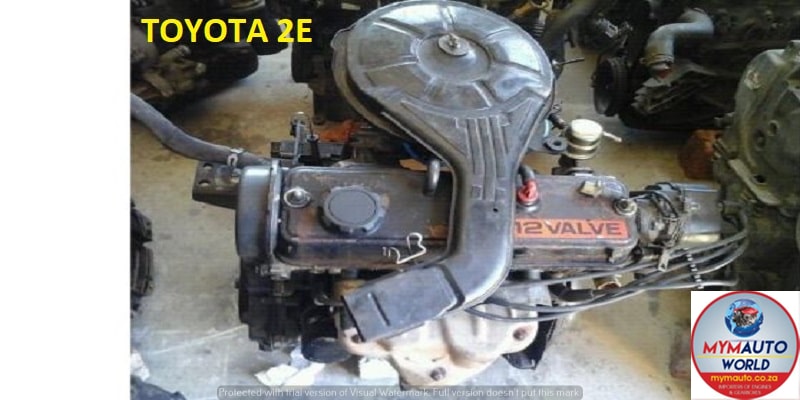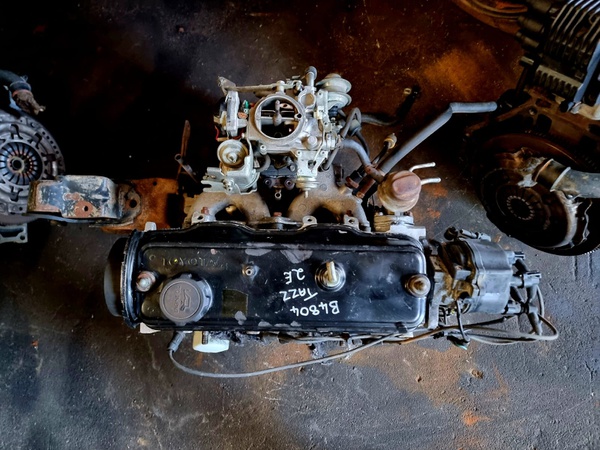Toyota Tazz: Exploring Its Legacy and Continued Appeal Among Drivers
Toyota Tazz: Exploring Its Legacy and Continued Appeal Among Drivers
Blog Article
Check Out the Most Current Fads in Engine Technology Through Tazz
In the swiftly developing landscape of vehicle innovation, Tazz stands at the leading edge, highlighting considerable innovations in engine systems that prioritize both advancement and sustainability. tazz. From crossbreed engines that optimize fuel effectiveness to the development of hydrogen gas cells, the patterns shaping modern powertrains are not just improving efficiency but likewise addressing critical environmental challenges. As the industry continues to push limits, it is vital to think about exactly how these growths will influence future transportation services and the wider effects for international power consumption. What lies in advance in this essential change?
Hybrid Engine Innovations
Hybrid engine technologies stand for an essential change in automotive innovation, integrating the benefits of interior burning engines with electric propulsion systems. This combination not just boosts gas performance however additionally reduces emissions, meeting significantly rigid environmental regulations. By using both energy sources, hybrid engines can optimize efficiency, supplying power when required while conserving gas during less demanding motoring conditions.
Recent advancements in crossbreed technology consist of renovations in battery performance and regenerative braking systems. These technologies permit for greater energy healing during deceleration, which can be rerouted to help in acceleration or power accessory systems. Moreover, suppliers are concentrating on light-weight materials and small styles to make best use of the effectiveness of crossbreed powertrains.
The development of plug-in hybrids has likewise broadened the market, enabling drivers to charge their lorries utilizing standard electric outlets. This feature typically enables significant all-electric array, more reducing dependence on typical fuels. tazz. As the auto industry proceeds to progress, hybrid engine modern technologies are expected to play a critical duty in linking the void between standard vehicles and fully electrical versions, providing a transitional solution that caters to varied consumer needs and choices
Breakthroughs in Electric Powertrains
The vehicle landscape is swiftly developing, with electrical powertrains arising as a leading force in sustainable transportation. Advancements in electric vehicle (EV) modern technology are dramatically enhancing efficiency, customer, and performance experience. Secret developments consist of renovations in battery chemistry, which have actually increased energy thickness, minimized billing times, and prolonged general battery life.
Solid-state batteries, for instance, promise to change the market by offering higher safety and performance compared to conventional lithium-ion cells. Advancements in regenerative braking systems are making it possible for cars to recover energy during deceleration, contributing to overall efficiency.
In addition to battery modern technology, electric motor layouts are ending up being a lot more innovative. Technologies such as integrated motors and progressed thermal monitoring systems are helping to optimize power shipment and reduce weight, eventually enhancing car characteristics.

Collectively, these advances highlight the dedication to shift towards cleaner, a lot more reliable transportation solutions, positioning electrical powertrains at the center of automotive development.
The Surge of Hydrogen Fuel Cells
Increasingly, hydrogen gas cells are obtaining grip as a sensible choice to standard internal combustion engines and battery electrical vehicles. This modern technology uses the chemical energy kept in hydrogen, converting it right into power with an electrochemical reaction with oxygen. The primary byproduct of this procedure is water, making hydrogen fuel cells an eco-friendly alternative with absolutely no discharges at the tailpipe.

Automakers are progressively buying hydrogen fuel cell technology, recognizing its possibility for long-range applications and quick refueling capabilities that match standard fuels. Additionally, sectors such as sturdy transportation and public transportation are specifically fit for hydrogen gas cells, where battery electric services might fall short due to weight and array restrictions.
As research and investment remain to broaden, hydrogen gas cells are positioned to play a significant function in the future landscape of tidy transportation and power solutions.
Enhancements in Internal Burning Engines
Innovations in inner combustion engine (ICE) innovation are changing typical automobiles to meet modern-day ecological standards and performance assumptions. Direct fuel injection, for circumstances, enables for better atomization of gas, leading to even more total burning and improved power outcome.
Additionally, turbocharging has actually obtained importance, enabling smaller engines to supply higher performance without the weight of bigger engines - tazz. This modern technology not only increases performance but likewise adds to reduce fuel usage. Variable valve timing systems are also being improved, allowing engines to adjust to various driving conditions More Info for enhanced torque and responsiveness
Furthermore, using lightweight products in engine building and construction is coming to be basic, more improving gas performance by decreasing total lorry weight. Engine control devices (ECUs) are progressively sophisticated, allowing real-time adjustments that maximize efficiency and exhausts.
These enhancements collectively signify an essential change in ICE technology, lining up with global sustainability goals while still supplying the performance motorists anticipate from their automobiles. As the industry advances, these enhancements remain to shape the future of typical automotive design.
Future Fads in Engine Performance
Substantial advancements in engine efficiency are expected as makers concentrate on incorporating sophisticated technologies to meet strict environmental laws and customer needs. The shift in the direction of electrification, crossbreed systems, and alternate fuels is improving the automotive landscape, driving developments that enhance fuel economy and decrease exhausts.
One of the essential trends is the implementation of innovative products and producing techniques. High-strength alloys and light-weight compounds contribute to minimized lorry weight, therefore improving total performance. Furthermore, the adoption of turbocharging and variable valve timing modern technologies enables improved power output from smaller sized engines, better enhancing gas economic climate.

Conclusion
In verdict, the expedition of engine see this innovation discloses substantial advancements that prioritize sustainability and efficiency. Developments in crossbreed engine systems, electric powertrains, and hydrogen fuel cells demonstrate a dedication to lowering exhausts while boosting performance. Additionally, improvements in inner combustion engines and a concentrate on lightweight materials add to overall engine performance. As the automotive sector continues to develop, these trends will play a critical function in forming a cleaner and more lasting future for transport.
From hybrid engines that optimize gas efficiency to the introduction of hydrogen gas cells, the trends shaping modern-day powertrains are not just improving performance but also dealing with essential environmental difficulties.Crossbreed engine advancements represent a crucial shift in automobile modern technology, integrating the benefits of interior burning engines with electrical propulsion systems.Additionally, turbocharging has actually acquired importance, enabling smaller engines to deliver greater efficiency without the weight of larger engines. Additionally, the adoption of turbocharging and variable valve timing innovations permits for boosted power result from smaller engines, better boosting fuel economy.
Improvements in internal combustion engines and an emphasis on lightweight products contribute to total engine efficiency.
Report this page